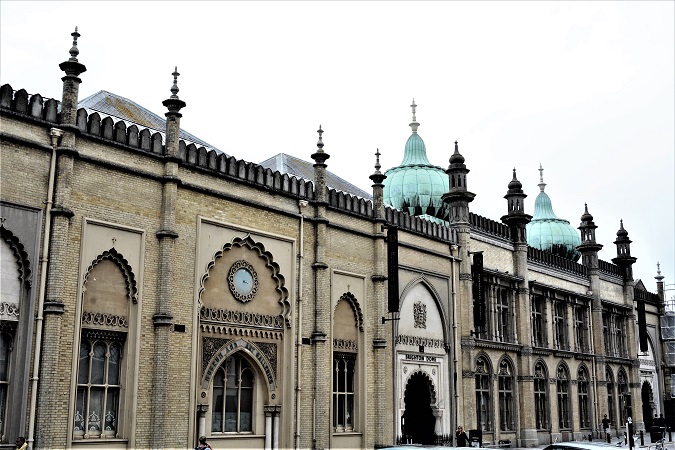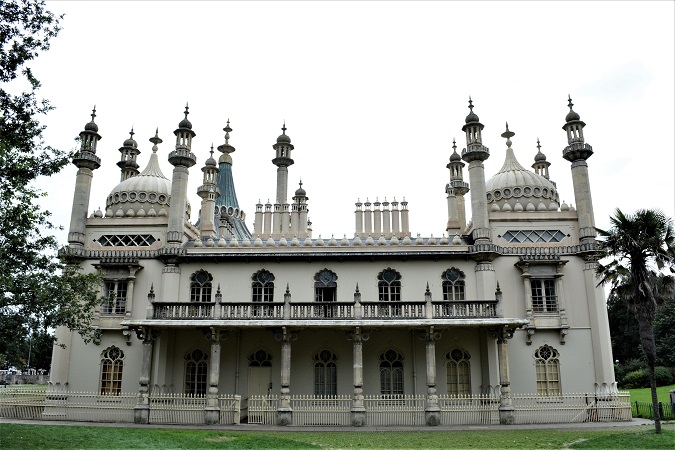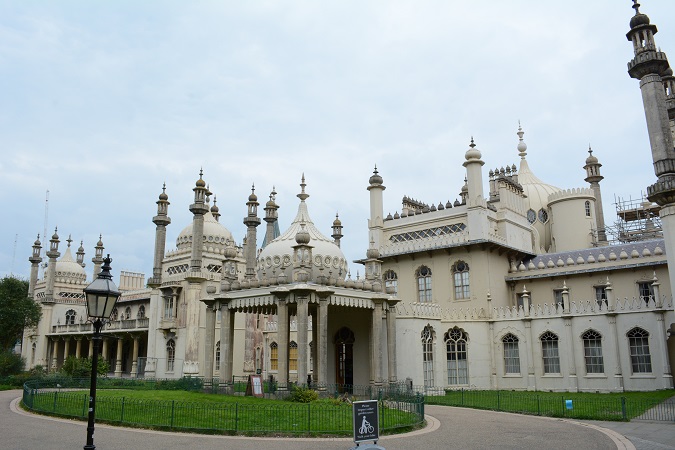
An Indian palace in England. Home to King George IV. Updated 29 Jan 2023.
Royal Brighton Pavilion
If you look at a photo of the Royal Pavilion, you might guess that the photo was taken somewhere in India. In fact, the pavilion is located in Brighton, on the south coast of England.
Prince George, Prince of Wales, who later became King George IV, built the palace for his summer home. The young prince wanted a place to get away from the royal family and the public in London. His doctor told him that bathing in the sea would be good for his gout.
Prince George’s uncle, the Duke of Cumberland, already lived in Brighton. The prince shared his lifestyle of fast living, gambling, fancy dinners and the theatre.
The Stables and Grounds
Originally the stables, later a concert hall and now a museum and art gallery.
The prince purchased some land, and construction of the pavilion started in 1787 with the central rotunda. He also purchased the surrounding land and built a huge stable for his 60 horses. Work on the pavilion continued. Each year or so, it expanded until it reached its present size in 1822. The building is one of the most spectacular and exotic in Britain.
The original entrance to the property. It is now a city park.
William IV and Queen Victoria
George IV died in 1830. His successor, William IV, also lived in Brighton during the summer months. William’s Successor, Queen Victoria, did not like Brighton. The railroad arrived in Brighton in 1841, bringing loads of tourists from London who often wanted to see the palace. Victoria said, “the people here are very indiscreet and troublesome”.
Victoria sold the pavilion to the town of Brighton and used the money to build a new summer residence in a more remote location on the Isle of Wight, off the south coast. The stables became a concert hall, and the pavilion was Brighton’s convention and meetings hall.
When the building was sold to the town, all of the furnishings were removed. Most of them went to Buckingham Palace and Windsor Castle. Slowly, over the decades, much of the furniture was returned. Victoria returned some of the furniture in the late 1860s.
During the First World War, the pavilion was a military hospital for the Indian army. The Indians must have felt right at home with this architecture. After the war, it became a hospital for limbless veterans. It was a hospital until 1920, when it was returned to the city of Brighton. King George V returned more of the original furnishings after 1920.
Brighton Royal Pavilion Today
Since the Second World War, the city of Brighton has been trying to restore the Royal Pavilion to its original condition. Most of the furnishings have been returned on loan by Queen Elizabeth II.
Today the Royal Brighton Pavilion is a tourist attraction and a beautiful city park for the locals. It is a popular place for weddings. The former stables is now a museum and art gallery. Tourists can enter the pavilion for a fee. Photographs of the inside, however, are not allowed by order of Queen Elizabeth. It seems that the queen does not like to have her furniture photographed. The same rule applies to Windsor Castle and other royal buildings.
If you go to the south coast of England, be sure to visit this strange and historic building.



